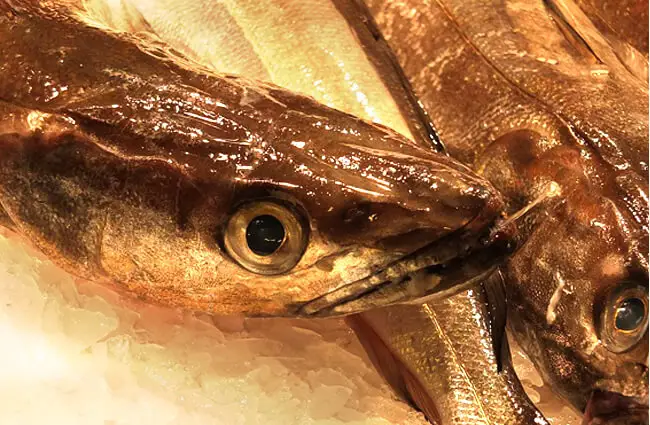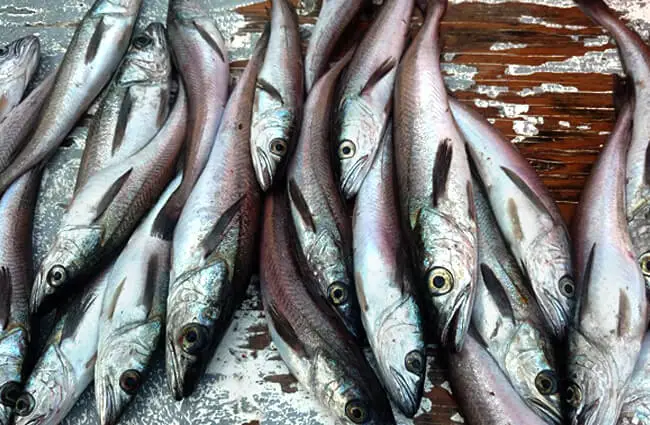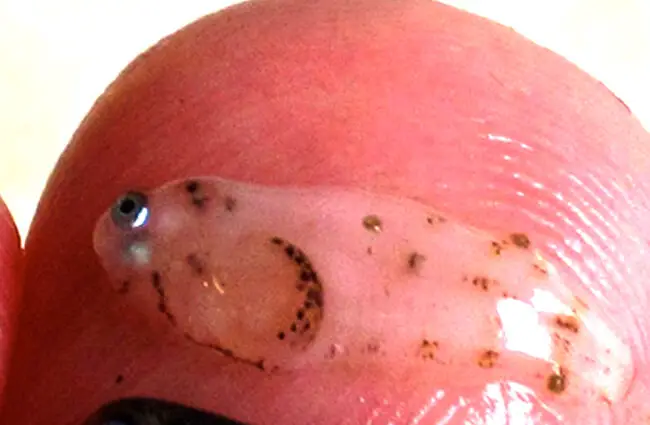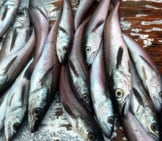People refer to several different species of fish as “Hake.” Researchers place these fish in the Merlucciidae family along with grenadiers.
Though researchers recognize 18 different species, the North Pacific Hake has the greatest commercial importance and is the best known. For this reason, we will focus primarily upon that species, Merluccius productus. Read on to learn about the Hake.
Description of the Hake
This species has a long, slender body. Its mouth has a prominent underbite, and it has silver-grey colored scales. The scales on its underside have light silver to white coloration.
At its largest, this fish reaches about three feet in length. Most individuals weigh a pound or two, and larger specimens reach about three pounds.
Interesting Facts About the Hake
This commercially important species has a number of unique traits and characteristics. Learn more about what makes them unique, below.
- A Fish of Many Names – People refer to this species by many different names. Some of their other common names include Jack Salmon, Pacific Hake, Pacific Whiting, and more.
- Fish Stocks – People utilize three primary populations for commercial fishing. One population ranges from the coast of California to Queen Charlotte Sound in Canada. The next utilizes the Strait of Georgia. Finally, the last ranges in the Puget Sound.
- Fishery Management – U.S. and Canadian governments set regulations for these fisheries. This helps prevent depletion of the populations of this fish species. The plan sets guidelines on the size and number of fish harvested.
Habitat of the Hake
These fish utilize different habitats depending on the time of day. They undergo vertical migrations, which means that they move up and down in the water column. During the day, they rise into open water closer to the surface. At night, they move to the sea floor to forage.
Distribution of the Hake
This species lives in the eastern Pacific Ocean. They live along the coastline of western North America, where you can find this species as far south as the Gulf of California. Their range extends north up the coast of the United States to the southwest coast of Canada.
Diet of the Hake
With a carnivorous diet, this fish preys on other animals. However, its prey selection varies based on the size of the individual. Their most common prey items include plankton, shrimp, and a wide range of other invertebrates and small fish species.
Hake and Human Interaction
Humans utilize this species as a commercial food source, primarily for its use in fish meal and pet foods. Historically, people have exploited this species to the point of population decline through overfishing. However, with governmental regulation their populations have rebounded and the IUCN lists the species as Least Concern.
Domestication
Humans have not domesticated this fish in any way.
Does the Hake Make a Good Pet
No, this fish does not make a good pet. It grows too large to easily house in a home aquarium.
Hake Care
People do not generally keep this species in aquariums. It does not have particularly interesting behavior or appearance, and its populations do not require a captive breeding program. For this reason, little specific information exists on their care.
Behavior of the Hake
Schools of this fish exhibit daily foraging migrations. During the night, this nocturnal fish swims into the depths of the sea floor to search for prey. As day approaches, they rise in the water column. During the breeding season, the schools move farther offshore to spawn.
Reproduction of the Hake
Breeding season occurs from January until June. They reach sexual maturity and begin to reproduce when they reach three years of age. This species reproduces via spawning, where the females release their eggs and the males fertilize them outside of the body. A single female can produce hundreds of thousands of eggs.



![Offshore Hake at the Gulf of Mexico Offshore Hake at the Gulf of Mexico Photo by: NOAA Photo Library [Public domain]](https://animals.net/wp-content/uploads/2020/01/Hake-4-650x425.jpg)
![Illustration of a Chester's Hake Illustration of a Chester's Hake Photo by: [public domain]](https://animals.net/wp-content/uploads/2020/01/Hake-3-650x425.jpg)



![Offshore Hake at the Gulf of Mexico Offshore Hake At The Gulf Of Mexico Photo By: Noaa Photo Library [Public Domain]](https://animals.net/wp-content/uploads/2020/01/Hake-4-162x141.jpg)
![Illustration of a Chester's Hake Illustration Of A Chester'S Hake Photo By: [Public Domain]](https://animals.net/wp-content/uploads/2020/01/Hake-3-162x141.jpg)

![Red Angus Closeup of a beautiful Red Angus cowPhoto by: U.S. Department of Agriculture [pubic domain]https://creativecommons.org/licenses/by/2.0/](https://animals.net/wp-content/uploads/2020/03/Red-Angus-4-238x178.jpg)












![Red Angus Closeup of a beautiful Red Angus cowPhoto by: U.S. Department of Agriculture [pubic domain]https://creativecommons.org/licenses/by/2.0/](https://animals.net/wp-content/uploads/2020/03/Red-Angus-4-100x75.jpg)

